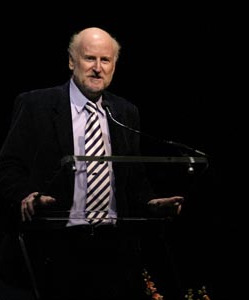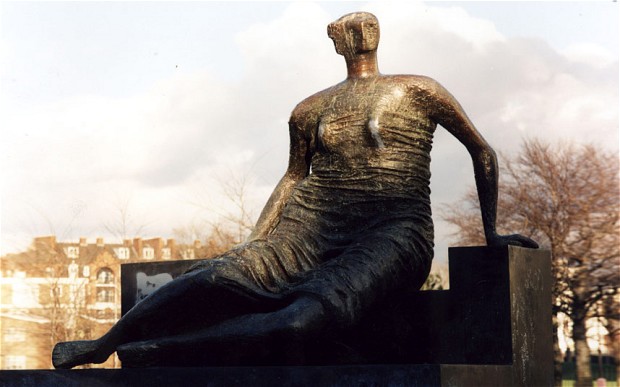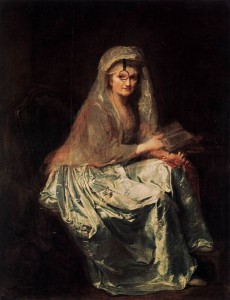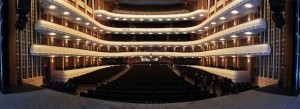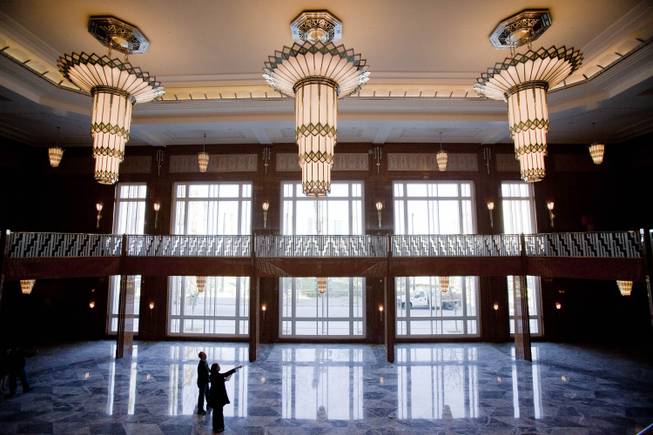Many museums, especially in recent years, have sent their collections on tour, but rarely has one been so open about it as the Bury Art Museum near Manchester, England. There, the museum’s manager, Tony Trehy, has gathered together works from several provincial museums and sent them on a multi-city tour of China in an exhibit titled Toward Modernity: Three Centuries of British Art.
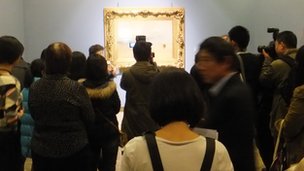 Now, before you move on, remember that Manchester was once a rich, rich town of manufacturing and manufacturing moguls. Hometown Bury boy Thomas Wrigley, a paper tycoon, “amassed a collection of 200 artworks during the Industrial Revolution,” according to the BBC, and opened the Bury Art Museum in 1901 to house it. Among the treasures are J.M.W. Turner’s Calais Sands [at right at the Beijing World Art Museum] and George Clausen’s 1888 work Spring Morning [below, left]. But faced with potential cuts in government support, Trehy approached similar museums in England — in Chester, Bolton, Salford and other once-rich towns — and asked them to lend their best pieces for the tour. Chinese galleries, including those in Beijing and Shanghai as well as smaller cities, have been eager to get the show. Trehy told the BBC:
Now, before you move on, remember that Manchester was once a rich, rich town of manufacturing and manufacturing moguls. Hometown Bury boy Thomas Wrigley, a paper tycoon, “amassed a collection of 200 artworks during the Industrial Revolution,” according to the BBC, and opened the Bury Art Museum in 1901 to house it. Among the treasures are J.M.W. Turner’s Calais Sands [at right at the Beijing World Art Museum] and George Clausen’s 1888 work Spring Morning [below, left]. But faced with potential cuts in government support, Trehy approached similar museums in England — in Chester, Bolton, Salford and other once-rich towns — and asked them to lend their best pieces for the tour. Chinese galleries, including those in Beijing and Shanghai as well as smaller cities, have been eager to get the show. Trehy told the BBC:
Put it this way. It’s sufficiently lucrative that people have stopped talking about cutting us.
Now, Trehy “is now hoping to take to other countries, and which could provide the template for further themed exhibitions.”
The BBC notes that this beats what the Bury Council did in 2006, which was deaccessioning a painting by L.S. Lowry “to plug a budget deficit,” causing an uproar.
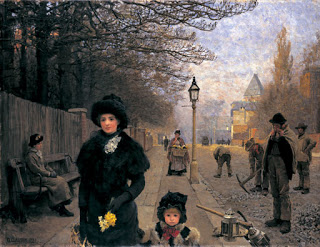 Indeed it does. Trehy and others want to send the show to other countries, too. And while it seems that many, many museums are renting their collections this way, what I don’t think is good is this comment from Trehy:Â “Assuming we can do it on a regular basis, it becomes a significant new source of funding for museums.”
Indeed it does. Trehy and others want to send the show to other countries, too. And while it seems that many, many museums are renting their collections this way, what I don’t think is good is this comment from Trehy:Â “Assuming we can do it on a regular basis, it becomes a significant new source of funding for museums.”
It seems to me that these tours should provide a cushion, in extraordinary times, not something that is, so to speak, baked in the cake. Once that happens, the next funding drought or economic downturn will require another remedy — and what might that be? We are back to deaccessioning or closure.
Treasures from Wales are also on view in China, but the arrangement for that, between the National Museum Wales and the Three Gorges Museum in Chongqing, is a traditional partnership (I think).
Photo Credits: Courtesy of the BBC (top)

